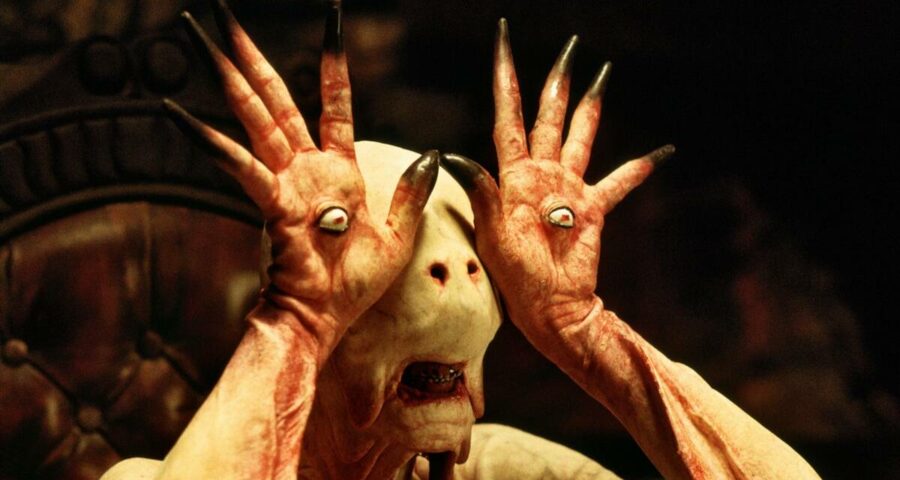Pan's Labyrinth is the perfect crystallisation of Guillermo del Toro's themes. He uses fantastical elements in the movie to signify how we use fantasies to escape from reality. His monsters are weird, strange but also beautiful — in a way.
Mexican film director Guillermo del Toro turns 57 on Saturday. The Oscar-winning auteur is known to possess distinctive qualities that make his films unique and interesting. While he has won acclaim for everything he has done so far, it is 2006’s visually dazzling, whimsical, weird (but in an attractive way) dark fantasy fable Pan’s Labyrinth that is arguably his best movie.
Here’s why.
Pan’s Labyrinth is often called a fairy tale for adults, and indeed it is that. It has all the fairy tale characteristics and can even be called Alice in Wonderland for grownups. It tells the story of immortal Princess Moanna of the Underworld who visited the human world above but was blinded by the sunlight, forgot who she was, became mortal and died.
https://youtube.com/watch?v=AcHasH-nLhU%3Fversion%3D3%26%23038%3Brel%3D1%26%23038%3Bshowsearch%3D0%26%23038%3Bshowinfo%3D1%26%23038%3Biv_load_policy%3D1%26%23038%3Bfs%3D1%26%23038%3Bhl%3Den-US%26%23038%3Bautohide%3D2%26%23038%3Bwmode%3Dtransparent
Her father, the King of the Underworld, believes she will be back one day, so he built a labyrinthine (pardon the pun) network of passageways that can act as portals to his realm and let her come back to where she belongs.
Cut to the real world. Ofelia is a ten-year-old girl who lives in 1944’s Spain, now called Francoist Spain as it was ruled by the fascist dictator Francisco Franco. She travels with her heavily pregnant mother to her step-father Captain Vidal’s place.
There, she finds a stick insect who, like the rabbit in Alice in Wonderland, leads her to a labyrinth. Inside, she meets a faun who tells her that she is the Princess of Underworld and must complete three tasks if she wishes to regain her immortality and return to her kingdom. And she is eager to escape the disagreeable real-world in which men like Captain Vidal, who are hunting rebel remnants for sport.
It is apparent from his filmography that del Toro looks at monsters differently, not like us: something to fear and loathe. He thinks of them and the stories they inhabit as the manifestations of our inner demons, something we create to understand the inexplicable. His films seem to show a mirror to the society and ask: who are the real monsters, weird creatures or humans?
But it is Pan’s Labyrinth that is the perfect crystallisation of his themes. He uses fantastical elements in the movie to signify how we use fantasies to escape from reality. His monsters are weird, strange but also beautiful — in a way. They are also neither bad or good. They are nature itself, indifferent to humanity.
The imagery in Pan’s Labyrinth is stunning, no doubt aided by cinematographer his namesake Guillermo Navarro, who was justly given an Oscar for his work. Even the real world is given an alluring, otherworldly touch.
https://youtube.com/watch?v=bjRPBfXJ0yY%3Fversion%3D3%26%23038%3Brel%3D1%26%23038%3Bshowsearch%3D0%26%23038%3Bshowinfo%3D1%26%23038%3Biv_load_policy%3D1%26%23038%3Bfs%3D1%26%23038%3Bhl%3Den-US%26%23038%3Bautohide%3D2%26%23038%3Bwmode%3Dtransparent
While it is at its core a fairy tale, it is not devoid of the repulsive aspects of our world as, say, Disney’s fairy tale films are. The fairy tale movie genre instantly evokes the House of Mouse’s name, but it is del Toro who has made the best looking, most meaningful and compelling fairy tale movies ever.
Source: Read Full Article



